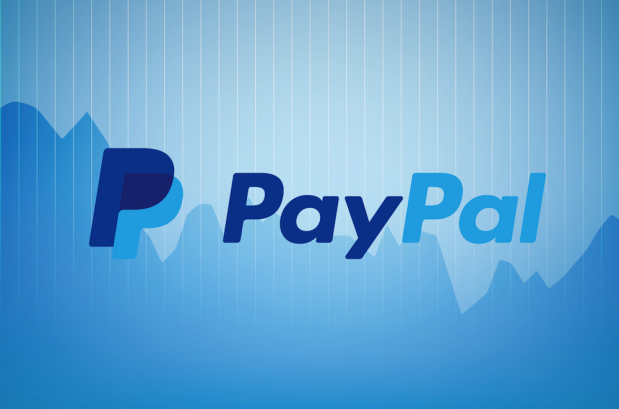PayPal Crushes Q2

In a high-drama week across the board, it was never going to be an easy feat to break through with a breakout performance. But PayPal managed it pretty handily because, by all reasonable measures, Q2 2016 was a very good time to be PayPal.
Coming up on the one-year anniversary of the IPO that officially spun PayPal off from longtime parent firm eBay, the San Jose-based payments company has seen its stock price increase 19 percent. Last quarter, PayPal managed to slightly beat The Street’s expectations of $2.6 billion in revenue by clocking in at $2.65 billion. It also upped its yearly revenue guidance from $10.75 billion to $10.85 billion.
Last quarter was also a pretty good time to be an investor. PayPal returned $300 million to stockholders last quarter by repurchasing 8 million shares of common stock.
And the run of impressive numbers — and we aren’t done with those quite yet — was only a second-tier story coming out of PayPal’s earnings yesterday (July 21). Top billing went to the big announcement about PayPal and Visa’s forthcoming collaboration that will both make it much easier for customers to move money from their PayPal account to their bank accounts via their Visa debit card and make it possible for consumers to use PayPal to pay at any retail location that accepts contactless Visa. And it represents, CEO Dan Schulman told investors in the wake of the dual earnings/Visa announcement, yet another iteration of PayPal’s restart since becoming independent from eBay.
“This is a new PayPal, one that is actively partnering across the digital payments landscape,” Schulman told investors. “This deal has the potential to be transformative for PayPal, Visa and the industry.”
The Big Visa Deal
As eye-catching goes, the Visa deal is probably the winner. Schulman told investors that, from PayPal’s end, the ultimate goal is simple: maximize consumer choice and make it easy to sign in and use the PayPal platform wherever, however, for whatever.
“By making customer choice a priority for PayPal, we are opening up new opportunities for partnerships within our ecosystem,” Schulman said — partnerships like the one announced with Visa. “The benefits of this partnership include our ability to gain access to Visa’s tokenization services, starting in the United States, for in-store PayPal transactions. This will allow customers to pay with their Visa instruments in the PayPal wallet at the millions of retail locations where they see the Visa contactless logo. Importantly, retailers can expect to pay fees that are consistent with other contactless transactions they accept today.”
The favored takeaway is that PayPal is coming to physical stores, something made possible by its agreement to be part of Visa’s Digital Enablement Program (VDEP). That move is actually quite a bit bigger than the ability to tokenize payments credentials and enable physical POS payments via the mobile phone.
The real value of PayPal’s connection to VDEP is that it eliminates the need for PayPal to engage in the onerous and time-consuming bilateral issuer deals that hold back the wheels of progress when it comes time to enable those in-store payments. Instead, VDEP is now PayPal’s universal onramp that gives it automatic access to the 14,500 FIs that are part of Visa’s global network. That shortcuts the need for issuer contracts, technology integrations or the ability for any token requestor to “tax” issuers via a bps/transaction toll.
PayPal also gets the side bonus of economic incentives, including long-term fee certainty, removing the “threat of any targeted pricing actions.”
A big deal — and very big news — but not the only news worth reporting.
Back To Those Numbers
The second quarter by the numbers — even out past the raw stats, revenue and earnings — showed a very solid performance. Total payment volume last quarter was $86.2 billion, an increase of 29 percent. All in, U.S. payment volume grew 27 percent, and international volume was up 21 percent. PayPal ended the quarter with 188 million active accounts, an 11-percent increase from a year ago. PayPal onboarded a new account every 13 minutes. Most of that was driven by PayPal, followed by Venmo.
PayPal also had time to tout the individual numbers of its One Touch service, which was a particular winner.
“One Touch is the most rapidly adopted product in PayPal’s history,” Schulman noted. “As of Q2, 25 million consumers have opted into One Touch, and I’m pleased to say that we now have over 2 million merchants offering this innovative way to pay. With a market-leading 87 percent conversion rate, we continue to see increased engagement and conversion with the use of One Touch.”
Also highly touted during the earnings call was Venmo’s performance, with 4 million payments and an increase in usership of 141 percent year over year. Braintree was called out as an MVP player for PayPal repeatedly during the earnings call.
“Braintree continues to gain momentum, rapidly adding new merchants, ending the quarter with 309 million cards on file, an increase of 101 percent from the same period a year ago,” Schulman noted. He also mentioned that Braintree powers 80 percent of Pinterest merchants and is the processing power behind Pinterest’s new shopping cart.
And then, there are the mobile figures.
“PayPal processed over $24 billion in mobile payments volume, an increase of 56 percent year over year,” Schulman told investors. “Mobile now represents 28 percent of our total payments volume, up from 26 percent in the first quarter.”
Like we said at the beginning, Q2 was a good time to be PayPal.
What about beyond? It is impossible to say, and Schulman himself noted that mobile is the most fraught and competitive landscape in the world today.
But PayPal has powerful allies, a wide reach, a global audience and, for now, everyone’s attention, because suddenly it seems ready to ratchet the mobile payments wars up to the next level.
